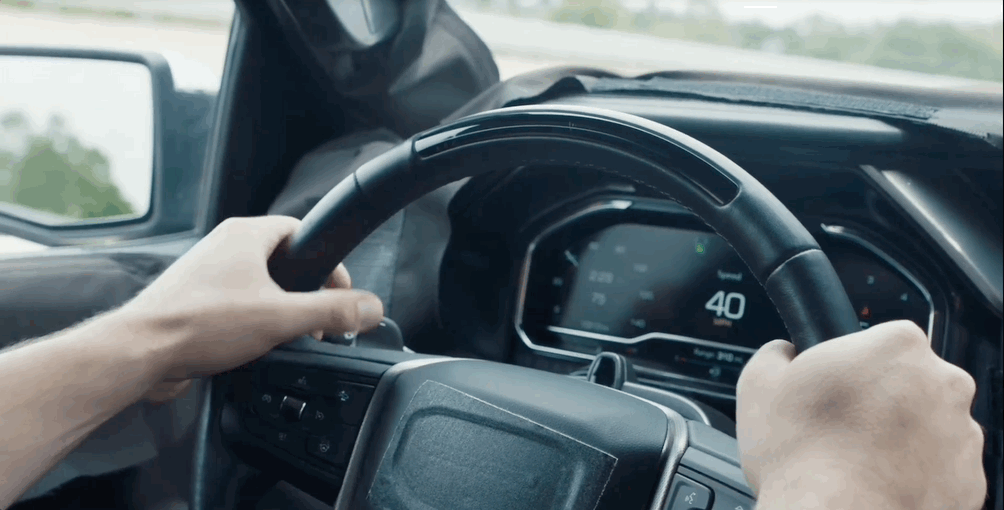/
GM thinks it can teach its customers to use its hands-free Super Cruise system safely. But Tesla may be muddying the waters.
Share this story
:no_upscale():format(webp)/cdn.vox-cdn.com/uploads/chorus_asset/file/22734129/super_cruise_2.gif)
Raise your hand if you’ve tried one of those new-fangled hands-free driver-assist systems. Now raise both hands. But for the love of god, keep your eyes on the road!
Love them or hate them, hands-free driving systems are becoming more prevalent on the road. Most major automakers offer hands-free driving as an option or a subscription, from GM’s Super Cruise to Ford’s BlueCruise to Nissan’s ProPilot. (Tesla’s Autopilot and Full Self-Driving (FSD) systems are not technically hands-free, a fact that annoys most Tesla owners to no end.)
But with more hands-free driving entering the realm of what’s possible, more risks inevitably come with it. Last week, GM launched a public education campaign to help customers better understand what distinguishes Super Cruise from other systems and to make it clear to drivers what’s allowed when driving hands-free.
Andrew Farah, executive director of advanced driver-assist systems (ADAS) at GM, said the public education campaign has as much to do with explaining to customers what Super Cruise doesn’t do as it does explaining what the system does do.
“You are still the driver of the car,” Farah said in an interview. “And that’s why we don’t refer to those systems as autonomous.”
Most people have a lot of difficulty distinguishing between ADAS and fully automated driving systems. If the car is controlling acceleration, braking, and lane centering as well as performing automatic lane changes and monitoring blind spots — and your hands are in your lap the whole time — why shouldn’t that be described as self-driving or autonomous? It’s no surprise people conflate driver-assistance systems with self-driving.
Another issue is Tesla, which goes much further than most car makers in what technology it makes available to customers. It also takes a lot of license in how it describes these technologies. Full Self-Driving, for example, is not a self-driving system. Drivers need to keep their hands on the steering wheel and their eyes on the road at all times. The system can frequently ask the driver to take control when it can’t figure out what to do.
The same goes for Super Cruise, which Farah notes is a “hands-free, eyes-on” system. “Making sure that we are very clear when we talk about what our system can do and can’t do,” he said.
GM says there are nearly 80,000 Super Cruise-equipped vehicles on the road today, with more than 22 additional models expected to have it available by the end of the year. As of June 9th, more than 77 million hands-free miles have been driven with Super Cruise, the company says. Ford says it has 225,000 vehicles equipped with its hands-free BlueCruise system that have driven a cumulative 100 million miles.
But both of those systems pale in comparison to Tesla’s. According to the company’s latest earnings report, over 400,000 vehicles in the US and Canada have access to FSD, and those vehicles have driven over 325 million miles. And because it has been more aggressive in selling these products to customers, Tesla has the highest crash rate among automakers with advanced driver-assist systems on the market. Since 2019, Tesla vehicles with Autopilot or FSD have been involved in 736 crashes, including 17 fatalities.
For better or worse, Tesla is driving the discussion about advanced driver-assist systems. Farah acknowledged that GM needs to be more aggressive about highlighting the differences with Tesla’s system to avoid comparisons.
“We can’t shield ourselves [from public perceptions],” Farah admitted. “General Motors can’t necessarily just say we’re completely different and separate from everybody else. We all get painted with the same brush.”
“Am I worried about it?” he continued. “What I know is that we’ve made sure we’ve got a fully tested system, and we’re putting it out there as such, there’s no disclaimer to sign… I can’t speak for the other folks.”
There is compelling evidence that, regardless of the company, most driver-assist systems are less safe than normal human driving. Drivers tend to develop an overreliance on these systems even after a short period of use. And when it’s time to take back control of the vehicle, their reaction times are slower than what’s considered safe.
There are also more instances of distracted driving when using ADAS — and why wouldn’t there be? When an ADAS frees up your hands from the task of driving, what are drivers most likely to do with that free time? Pick up their phones.
“We’ve done some research on that as well, to try to help us tune those things,” Farah said. “And a lot of it has to do with where you’re operating the vehicle, in what domain.”
Super Cruise is only operational on highways, where driving can be more predictable and there are fewer intersections and vulnerable road users. GM’s next-generation ADAS, Ultra Cruise, will broaden the operational domain to include city driving, making it more risky to use. But both Super Cruise and Ultra Cruise will require the driver to pay attention to the road.
Farah declined to comment on whether GM would eventually offer a Level 3 “unsupervised” ADAS, like Mercedes-Benz is planning to do in Nevada and California. But ultimately, it depends on how automakers approach these technologies, how they test them, and then, ultimately, how they market them to their customers.
“We do not view Super Cruise as a safety system,” Farah said bluntly. “We validated and tested as if it was… The driver still is asked to be in the loop and is still, in the end, responsible for the overall safety of the vehicle and its occupants.”
